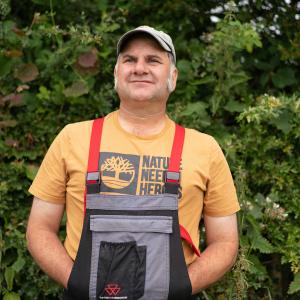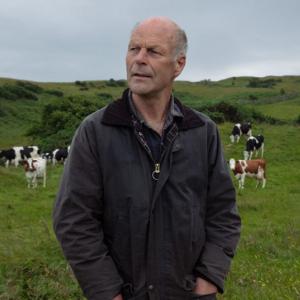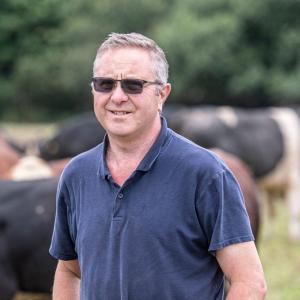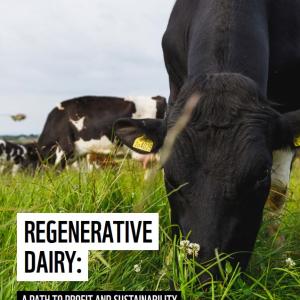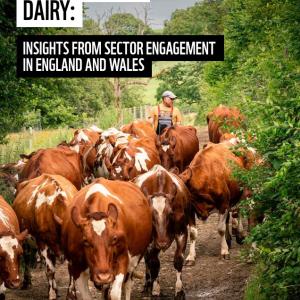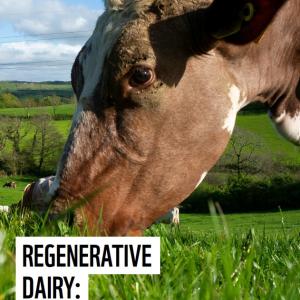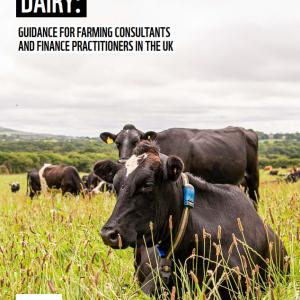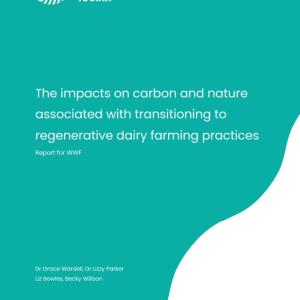
What is Regenerative agriculture?

Why are we talking about Regenerative Agriculture?
In the UK and around the world, the food system’s reliance on large-scale, industrial farming practices is destroying habitats, decimating species causing biodiversity loss, which exacerbates climate change. From clearing forests to grow crops to feed livestock, to using artificial fertilisers and pesticides to boost yields, this way of producing our food has come at a high cost for us all. Farmers, directly impacted by changes in weather patterns, are key players in implementing change.
Regenerative agriculture are solutions that shift away from industrial agricultural practices to ways of farming that work in balance with nature and focus on health of ecosystems and soils. By using nature friendly farming practices that avoids the use of large amounts of fertilisers, sprays and pesticides, we enrich not just soil health, but our own health too. Our current high input-high output systems fails to account for environmental and social costs and often doesn’t provide consistent financial returns for farmers.

What does Regenerative Agriculture look like?
At the heart of regenerative agriculture is a holistic approach to restore and maintain ecosystem health. Particularly soil health, with a core set of principles. The goal is to improve soil fertility, water retention, and biodiversity. This reduces the need for external inputs like synthetic fertilisers and pesticides. Regenerative agriculture aims to sustain agricultural productivity and regenerate degraded landscapes.

How does it make use of nature?
Another key aspect of regenerative agriculture is using animals on the land in ways that also support nature. Well-managed grazing is a cornerstone of building a diversity of life beneath the surface of the soil and above it as well. This can include moving livestock to different grazing areas so as not to put too much pressure on a single field, planting trees for shade or introducing grazing as part of a rotation with other crops. Increasing the range of grasses used for the pasture for cattle also decreases pest and disease pressure, which in turns means farmers do not need to give cattle de-wormers or antibiotics.

How does it provide a solution for climate change?
At WWF, our vision integrates food production, nature restoration, and climate change mitigation. We refer to this as the triple challenge. Farming with nature at the centre has great potential to achieve this. Our Land of Plenty report found that regenerative farming could reduce the UK’s annual agricultural GHG (Greenhouse Gas) emissions to the equivalent of taking an extra 900,000 cars off the road by 2030.
There is no food without nature. By working with the natural cycles of our land we will be ensuring the resilience and stability of our food system. Changing farming practices to include nature at the centre by tackling soil degradation and moving away from the use of harmful chemicals, will allow nature to flourish. This will only be possible with adequate support. This means everyone in the supply chain must collaborate to support sustainable practices by ensuring farm businesses thrive and implementing long-term policy changes for environmental benefits.

Amplifying farmers’ voices
David Finlay (Dumfries and Galloway, West Scotland), Sophie Gregory (Dorset, England), James Robinson (Cumbria, England) and Andrew Brewer (Cornwall, England).
These case studies showcase the diverse motivations driving farmers to make this shift, from seeking a better work-life balance to ensuring a resilient farming system for future generations. The case studies also highlight that transitioning to a regenerative system is not only financially sensible but also a strategic business decision.
They were selected to represent a variety of dairy farmers, and are a mix of organic and non-organic, tenanted and owned farms, with some farmers who have a multi-generational association with the farm and one who was new to the industry.
While every farm and farmer are different, these case studies provide real-life examples of some of the issues – the difficulties and the benefits – of transitioning towards working more closely with nature.
